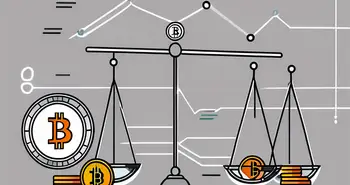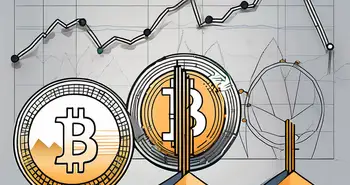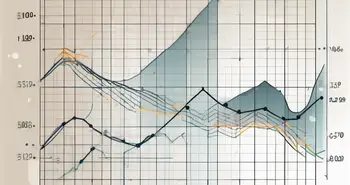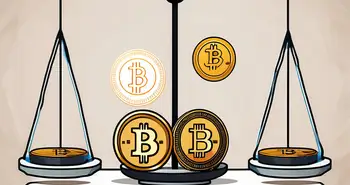Margin Trading: Cross Margin vs Isolated Margin Explained
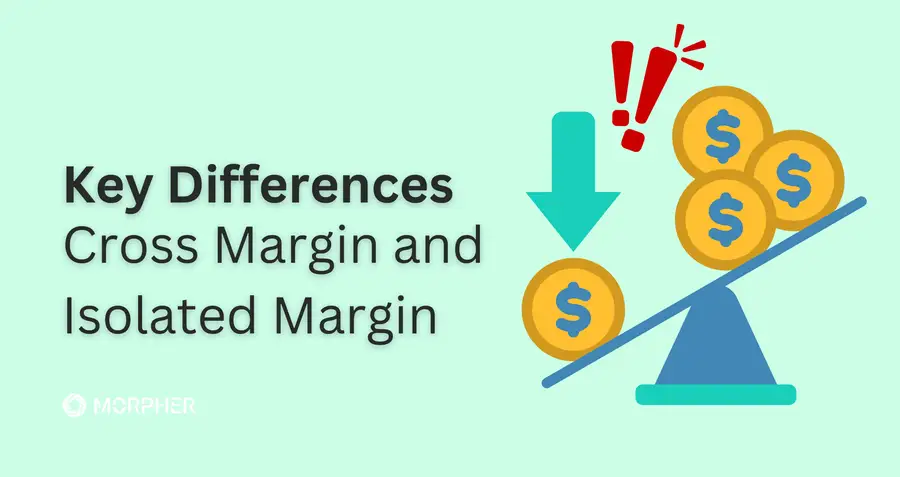
As an expert in the field of cryptocurrency trading, I am often asked about the intricacies of margin trading. Margin trading is a widely-used strategy in the financial world, particularly in cryptocurrency markets, allowing traders to amplify their potential returns. By borrowing funds to increase their buying power, traders can take larger positions than they would otherwise be able to with their own capital. However, with increased potential comes increased risk.
One of the most important decisions in margin trading is choosing between cross margin and isolated margin. These two approaches determine how your funds are allocated, how much of your capital is at risk, and how you manage your positions during market volatility. The right choice can make all the difference in protecting your portfolio and maximizing your opportunities.
In this guide, we’ll break down the key differences between cross and isolated margin, explain how each works, and help you decide which approach suits your trading strategy. Whether you’re a beginner or a seasoned trader, mastering this distinction is a critical step toward effective margin trading.
Margin Trading in a Nutshell
Margin trading is not for the faint of heart. It involves borrowing funds from a broker or an exchange to increase your position size. In return, you have to pay interest on the borrowed amount, and there is a risk of losing more than your initial investment. It requires careful risk management and a solid understanding of market dynamics.
For example, let's say you have $10,000 in your trading account and want to buy Bitcoin with a leverage of 5x. With margin trading, you can essentially control $50,000 worth of Bitcoin. This amplifies potential profits if the price of Bitcoin goes up, but it also magnifies losses if the price goes down.
What is Cross Margin?
Cross margin is a type of margin trading where all the available funds in your trading account act as collateral for open positions. Instead of isolating risk to a single trade, cross margin allows losses from one position to be offset by available funds or profits from other positions.
How It Works
Imagine you’re holding multiple positions in your account. If one trade incurs a loss, cross margin pulls funds from your entire account balance to prevent liquidation. This can be beneficial in volatile markets where positions may temporarily move against you before recovering.
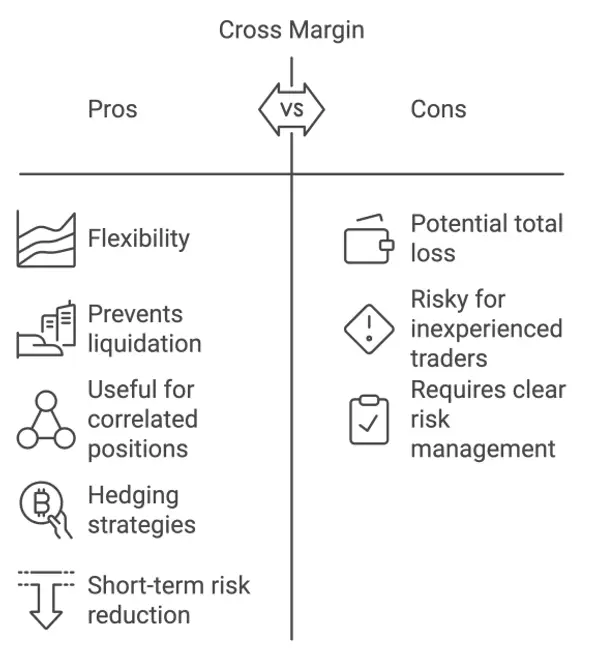
What is Isolated Margin?
Isolated margin, on the other hand, limits the risk to only the funds allocated for a specific position. This means that even if a trade goes south, the losses are restricted to the margin amount assigned to that particular trade.
How It Works
When you use isolated margin, each position operates independently. If a trade is liquidated, only the funds allocated to that position are lost. Your remaining account balance remains unaffected, providing greater control over your risk exposure.
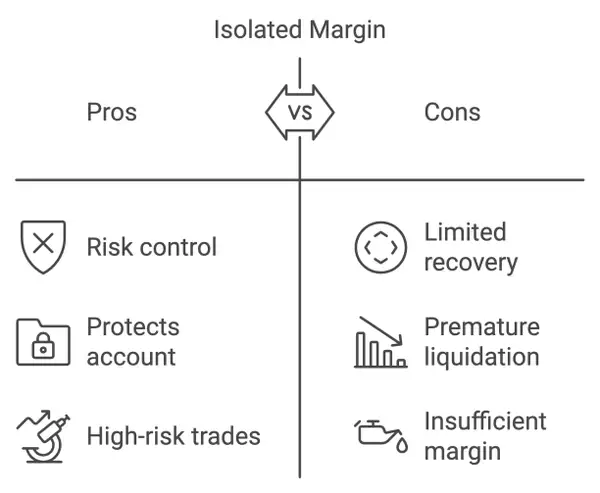
Key Differences Between Cross Margin and Isolated Margin
Understanding the differences between cross margin and isolated margin is critical for applying them effectively. Here’s how they compare:
| Feature | Cross Margin | Isolated Margin |
|---|---|---|
| Risk Exposure | Entire account balance | Only allocated funds |
| Flexibility | Allows covering losses across positions | Restricts losses to individual positions |
| Best For | Experienced traders, correlated positions | Beginners, high-risk trades |
| Liquidation Risk | Lower, as account funds act as collateral | Higher, limited to allocated margin |
Cross margin is more suitable for traders who manage multiple correlated positions or have hedging strategies in place, while isolated margin is a better fit for high-risk trades or beginners seeking better risk management.
When to Use Cross Margin vs. Isolated Margin
Choosing between cross margin and isolated margin depends on your trading goals, experience level, and the specific market conditions you’re navigating. Each margin type has its strengths and weaknesses, making them suitable for different scenarios. Let’s explore when you should consider using each.
When to Use Cross Margin
Cross margin is best suited for experienced traders who have a clear understanding of market dynamics and manage multiple positions simultaneously. Here are some scenarios where cross margin shines:
Trading Correlated Assets:
If you’re trading assets that tend to move in sync, such as Bitcoin and Ethereum, cross margin allows you to balance your positions. Gains in one position can offset losses in another, reducing your overall liquidation risk.
Executing Hedging Strategies:
Cross margin is ideal for traders who use hedging strategies to protect against adverse price movements. For example, you might go long on a spot position and short on a futures contract. Cross margin ensures your collateral is efficiently shared between these trades.
Maximizing Capital Efficiency:
By pooling your entire account balance as collateral, cross margin enables you to manage larger positions or multiple trades simultaneously without needing to allocate specific funds to each. This flexibility can be useful in volatile markets where opportunities arise quickly.
Confidence in Market Trends:
If you’re highly confident in a market trend and have a well-thought-out risk management plan, cross margin lets you leverage your funds more aggressively to capitalize on the opportunity.
Caution: Cross margin puts your entire account balance at risk. It requires constant monitoring and a disciplined approach to avoid significant losses.
When to Use Isolated Margin
Isolated margin is designed for traders who prefer tighter control over individual trades and want to limit the risk associated with any single position. It’s especially beneficial for beginners or those trading in volatile or high-risk markets. Consider using isolated margin in the following scenarios:
Managing High-Risk Trades:
If you’re trading an asset with unpredictable price movements, such as a lesser-known altcoin, isolated margin ensures that your risk is limited to the funds allocated to that specific trade. Even if the position is liquidated, the rest of your account remains safe.
Trading Uncorrelated Assets:
When trading assets that don’t move together (e.g., Bitcoin and a stablecoin), isolated margin helps compartmentalize your risk. Losses in one position won’t affect the performance of another.
Starting Out with Margin Trading:
If you’re new to margin trading, isolated margin provides a more controlled environment to learn. By risking only a portion of your funds per trade, you can experiment with strategies and build confidence without jeopardizing your entire account.
Protecting Against Overleveraging:
Isolated margin prevents you from unintentionally over-leveraging your account. Since each position operates independently, you’re less likely to drain your entire account due to a single miscalculation.
Short-Term, High-Volatility Markets:
For trades with a shorter time horizon or in markets prone to sudden spikes, isolated margin ensures your losses are contained. This makes it a safer choice for quick trades in turbulent conditions.
Which One Should You Choose?
The decision between cross margin and isolated margin ultimately depends on your risk tolerance and trading strategy:
- If you’re an experienced trader comfortable with managing multiple positions and understanding how assets correlate, cross margin offers flexibility and efficient capital usage.
- If you prioritize risk management, are trading volatile assets, or are just starting out, isolated margin provides a safer, more structured approach.
How Morpher Simplifies Leverage
Instead of requiring traditional cross or isolated margin accounts, Morpher’s leveraged trading system offers a simpler, more user-friendly alternative. Traders can apply up to 10x leverage on their trades, with the cost being a flat daily margin interest fee of 0.03% based on the net exposure of their position.
Key Benefits of Morpher’s Leveraged Trading
- Negative Balance Protection: You can never lose more than your initial investment, eliminating the risk of debt that traditional margin accounts may impose.
- Transparent Fees: The margin interest is deducted automatically, with no compounding, making costs predictable and manageable. Plus, we are not taking any commissions from your trades.
- Flexibility Without Complexity: By not requiring separate cross or isolated margin accounts, Morpher simplifies the process while maintaining the core benefits of leveraged trading.
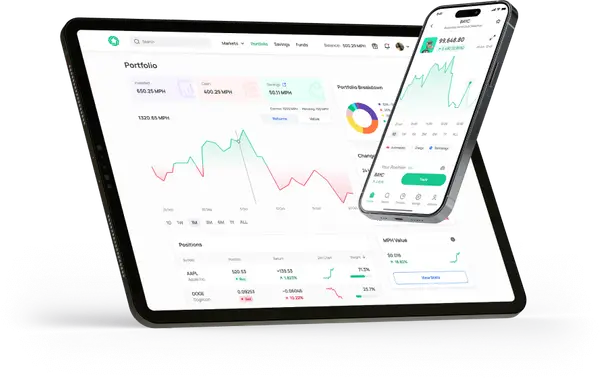
Conclusion
Cross and isolated margin are two essential concepts in traditional margin trading, offering distinct approaches to managing risk and exposure. While Morpher doesn’t require traders to choose between these margin types, understanding their principles can help you navigate leveraged trading more effectively.
Morpher’s unique system combines the flexibility of cross margin with the risk management benefits of isolated margin. With features like negative balance protection, transparent interest fees, and up to 10x leverage, it provides a streamlined and safer way to explore margin trading.
Ready to put these insights into action? Start trading on Morpher today and take advantage of its innovative approach to leverage. Experiment responsibly, refine your strategy, and unlock new opportunities in the financial markets. Create an account here.
FAQ: Frequently Asked Questions
Q: What is margin trading?
A: Margin trading allows traders to borrow funds in order to increase their buying power and potentially amplify their profits.
Q: What is the difference between cross margin and isolated margin?
A: Cross margin pools the margin across all positions, whereas isolated margin allows for individual allocation of margin to each position.
Q: What are the benefits of cross margin?
A: Cross margin provides more flexibility in terms of position size and reduces the risk of liquidation compared to isolated margin.
Q: What are the benefits of isolated margin?
A: Isolated margin offers greater control and risk management by allowing traders to define the margin for each position independently.
Q: How should I choose between cross margin and isolated margin?
A: The choice depends on your trading style, risk tolerance, and overall objectives. Cross margin offers flexibility, while isolated margin provides more control and protection.
Q: How can I mitigate risks in margin trading?
A: Set risk limits, regularly assess margin requirements, stay informed about market conditions, and practice proper risk management techniques such as diversification and avoiding overleveraging.

Disclaimer: All investments involve risk, and the past performance of a security, industry, sector, market, financial product, trading strategy, or individual’s trading does not guarantee future results or returns. Investors are fully responsible for any investment decisions they make. Such decisions should be based solely on an evaluation of their financial circumstances, investment objectives, risk tolerance, and liquidity needs. This post does not constitute investment advice.

Painless trading for everyone
Hundreds of markets all in one place - Apple, Bitcoin, Gold, Watches, NFTs, Sneakers and so much more.

Painless trading for everyone
Hundreds of markets all in one place - Apple, Bitcoin, Gold, Watches, NFTs, Sneakers and so much more.

